Links to external sources may no longer work as intended. The content may not represent the latest thinking in this area or the Society’s current position on the topic.
Memory reactivation: replaying events past, present and future

Theo Murphy international scientific meeting organised by Professor Edwin M Robertson and Dr Lisa Genzel.
This meeting directly addressed several key challenges to understanding replay and its contribution to memory. Participants discussed the diverse contemporary ways of identifying memory replay, whether these are revealing identical, distinct or complementary processes, and finally, what contribution replay makes to circuits to support memory. Addressing these issues was achieved through discussion prompted by short talks from speakers from diverse disciplines.
The schedule of talks and speaker biographies are below. Recorded audio of the presentations is available on this page under each speaker abstract.
An accompanying journal issue for this meeting was published in the Philosophical Transactions of the Royal Society B. It can be found here.
Enquiries: contact the Scientific Programmes team
Organisers
Schedule
Chair
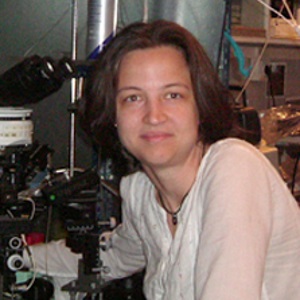
Dr Liset M de la Prida, Instituto Cajal - CSIC, Spain

Dr Liset M de la Prida, Instituto Cajal - CSIC, Spain
Liset M de la Prida runs the Laboratorio de Circuitos Neuronales at the Instituto Cajal in Madrid. She graduated in Physics in 1994 and earned her PhD in Neuroscience in 1998. She has held visiting positions in the laboratories of David Brown (London), Leon Lagnado (Cambridge) and Steven J Schiff (USA) that allowed her to acquire a broad background and expertise to study brain function. After a postdoc with Richard Miles in Paris she got her research position at the Instituto Cajal in 2007. The main goal of her lab is to understand the function of hippocampal and para-hippocampal circuits. Dr de la Prida serves as an Editor for prestigious journals including the Journal of Neuroscience, Journal of Neuroscience Methods and eNeuro, and has commissioning duties in the American Epilepsy Society and the Spanish Society of Neuroscience. She is a leading international expert in the study of the basic mechanisms of ripples and fast ripples.
| 08:05 - 08:45 |
Memory reactivation and the apparent biological implausibility of CLST
Two issues with CLST are: 1) consolidation of new memories appears to require many cycles of reactivation of new data interleaved with all previously acquired experience. Constraints on available reactivation time probably renders this unrealistic. 2) connectionist models avoid CI by retraining on all previous data, but the brain only has access to stored representations. McClelland et al.'s (1995), 'catastrophic' introduction of a penguin into the network, without interleaved retraining, was less than completely catastrophic: almost all the error was in the animals. The plant category was hardly affected. This leads to the hypothesis that exhaustive reactivation is not always necessary, and can be substituted with 'Similarity Weighted Interleaved Learning (SWIL)' in which only stored items that are similar to new items (e.g. the other animals) need to be interleaved in the reactivation mix. Under what circumstances this does or does not work will be explored in Jay's talk. I propose a simple, attractor style, hypothesis about how SWIL might occur in hippocampal-cortical interactions. A possible solution to the second problem was proposed in 1995 by Robins, with his concept of pseudorehearsal, in which random patterns were interleaved with new data (https://arxiv.org/abs/1802.03875). SWIL could operate on a similar principle, plus a similarity weighting based on experience-dependent suppression of AHPs (Disterhoft TINS, 2006, 29:587), which could bias recently partially activated cortical attractors to reactivate spontaneously when "pseudopatterns" (i.e. random inputs) are presented (Shen, Hippocampus, 1996, 6:685). By definition, these would be stored patterns that overlap with the new input. 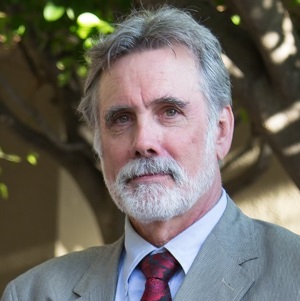
Professor Bruce L McNaughton, University of California at Irvine, USA

Professor Bruce L McNaughton, University of California at Irvine, USABruce McNaughton’s research involves the physiological and computational basis of cognition, with particular focus on memory and memory disorders, and the dynamic interactions among neuronal populations and synaptic plasticity mechanisms that underlie these phenomena. Bruce has made significant contributions to understanding central synaptic plasticity mechanisms (eg, LTP cooperativity and behavioural correlates, synaptic facilitation, synaptic depression), spatial information processing in hippocampus and cortex, cortico-hippocampal interactions and memory consolidation, and brain ageing. Bruce’s work has been characterised by a strong interaction between neuroscience theory (including computational modelling) and experiment. His current main interest is the role of hippocampal outflow to neocortex in memory replay and memory consolidation and the extraction of knowledge from episodic memory. |
|
|---|---|---|
| 08:45 - 09:30 |
Integration of new information in memory: new insights from a complementary learning systems perspective
According to complementary learning systems theory (CLST), integrating new memories into a brain-like neural networks without interfering with what is already known depends on a gradual learning process, interleaving new items with items previously learned. However, empirical findings now establish that information consistent with prior knowledge can sometimes be integrated quickly with little interference, and recent modeling research indicates that this finding can be captured in neural network models that reflect the properties of the neocortical learning system proposed in CLST. New work in collaboration with Bruce McNaughton and Andrew Lampinen uses deep linear neural networks in hierarchically structured environments to gain new insights into when integration is fast or slow and how integration might be made more efficient. The environments correspond to familiar taxonomic hierarchies, where items separated low in the tree (e.g., different species of sea gulls) share nearly all their properties, but items that separate at higher branches (sea gulls vs pine trees) share far fewer properties. Deep linear networks learn this kind of domain structure in a gradual, stage-like progression, capturing successive split in the hierarchy after increasingly long delays. In this context, a new item to can be characterized in terms of its projection onto the known hierarchy and whether it adds a new categorical split. The projection onto the known hierarchy can be learned rapidly without interleaving, but if the item has unique features or feature combinations requiring a new split, integration will require gradual interleaved learning. When the new item only overlaps with items in a branch of the hierarchy, interleaving can be focused on these items, with less interleaving overall. Discussion will consider how the brain might exploit these facts to make learning more efficient and will highlight predictions about what aspects of new information might be hard or easy to learn. 
Dr James L McClelland, Stanford University, USA

Dr James L McClelland, Stanford University, USAJames L (Jay) McClelland is the founding director and current Co-Director of the Center for Mind, Brain, Computation and Technology at Stanford University. Over the past 40 years he has developed and applied neural network models to address a wide range of aspects of human cognition and their neural basis. He is co-author of the two-volume work Parallel Distributed Processing with David R Rumelhart. In collaboration with Bruce McNaughton and others, James developed the complementary learning systems framework for understanding the neural basis of learning and memory. McClelland is a Member of the National Academy of Sciences (USA) and is a Corresponding Fellow of the British Academy, and has received many honours and awards, including Heineken Prize in Cognitive Science. |
|
| 09:30 - 10:00 | Discussion | |
| 11:00 - 11:30 | Coffee |
Chair

Professor Bruce L McNaughton, University of California at Irvine, USA

Professor Bruce L McNaughton, University of California at Irvine, USA
Bruce McNaughton’s research involves the physiological and computational basis of cognition, with particular focus on memory and memory disorders, and the dynamic interactions among neuronal populations and synaptic plasticity mechanisms that underlie these phenomena. Bruce has made significant contributions to understanding central synaptic plasticity mechanisms (eg, LTP cooperativity and behavioural correlates, synaptic facilitation, synaptic depression), spatial information processing in hippocampus and cortex, cortico-hippocampal interactions and memory consolidation, and brain ageing. Bruce’s work has been characterised by a strong interaction between neuroscience theory (including computational modelling) and experiment. His current main interest is the role of hippocampal outflow to neocortex in memory replay and memory consolidation and the extraction of knowledge from episodic memory.
| 10:30 - 10:50 |
Neural activity and information processing: a perspective from visual neuroscience

Dr Kendrick Kay, University of Minnesota, USA

Dr Kendrick Kay, University of Minnesota, USAKendrick Kay is an Assistant Professor at the Center for Magnetic Resonance Research at the University of Minnesota. He uses experimental and modelling techniques to investigate how the visual system represents stimuli and makes perceptual judgments about these stimuli. He combines expertise in cognitive neuroscience, functional magnetic resonance imaging methods, computational modelling, and data analysis techniques. |
|
|---|---|---|
| 10:50 - 11:10 |
Measuring memory reactivation in humans
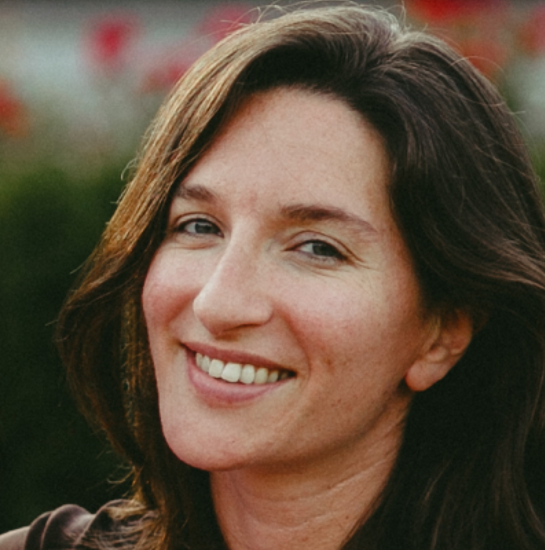
Dr Arielle Tambini, University of California, Berkeley, USA

Dr Arielle Tambini, University of California, Berkeley, USA |
|
| 11:10 - 11:30 | Discussion |
Chair

Dr James L McClelland, Stanford University, USA

Dr James L McClelland, Stanford University, USA
James L (Jay) McClelland is the founding director and current Co-Director of the Center for Mind, Brain, Computation and Technology at Stanford University. Over the past 40 years he has developed and applied neural network models to address a wide range of aspects of human cognition and their neural basis. He is co-author of the two-volume work Parallel Distributed Processing with David R Rumelhart. In collaboration with Bruce McNaughton and others, James developed the complementary learning systems framework for understanding the neural basis of learning and memory. McClelland is a Member of the National Academy of Sciences (USA) and is a Corresponding Fellow of the British Academy, and has received many honours and awards, including Heineken Prize in Cognitive Science.
| 12:30 - 12:50 |
Neuronal dynamics of the rodent hippocampus in memory-guided behaviour and rest
How does the brain compute new internal representations of the external world and what are the mechanisms that underlie the persistence of those representations? A growing body of studies show that offline reactivation of waking hippocampal firing patterns supports the stabilisation of information relevant to memory-guided behaviour. In this talk I will support this view by presenting a series of experiments that rely on monitoring and manipulating neuronal ensembles in the rodent hippocampus during memory tasks. I will present data showing that offline reactivation relates to the successful reinstatement of newly-learnt hippocampal representations of space alongside good memory performance. I will then describe how spectral components nested in individual cycles of the theta-band oscillations report transient hippocampal operating modes with complementary mnemonic roles. Together, these data will highlight how fine-grained neuronal dynamics in the hippocampus can be used to characterise different stages of memory processing. 
Dr David Dupret, University of Oxford, UK

Dr David Dupret, University of Oxford, UKDavid Dupret is a behavioural neurophysiologist leading a research programme at the Medical Research Council Brain Network Dynamics Unit (MRC BNDU), University of Oxford. David completed his PhD in Neuroscience at the Institute François Magendie (INSERM, University of Bordeaux, France), for which he received the French Neuroscience Association's 2007 PhD prize of the year. David has also held an 'Agrégation ès' Biological and Earth Sciences (Ministry of Education, France) since 2000. David joined the group of Professor Csicsvari at the MRC Anatomical Neuropharmacology Unit in September 2007 as a postdoctoral scientist, was appointed to a Senior Scientist position in 2011, promoted to tenured Programme Leader in 2015 and an Associate Professor in 2016. In 2016 David was elected a scholar of the FENS-Kavli network. His group investigates neuronal dynamics in the hippocampus and connected brain circuits in relation to memory and adaptive behaviours. |
|
|---|---|---|
| 12:50 - 13:10 |
Human fMRI and neural network modeling investigations of replay and consolidation during rest and sleep
Dr Schapiro will present work investigating the impact of sleep on new semantic learning. She uses a property inference task in which participants learn the names and visual properties of objects possessing both category-typical and exemplar-unique properties. In a first experiment, she found that sleep improved memory for the shared structure of object categories while simultaneously preserving object-unique information. To investigate the role of offline hippocampal replay in this consolidation process, Dr Schapiro used fMRI pattern analysis to track item-level replay in the hippocampus during an awake rest period after participants studied objects and completed a memory test. Objects that were remembered less well were replayed more during the subsequent rest period, suggesting a prioritization process in which weaker memories - memories most vulnerable to forgetting - are selected for replay. In a second session 12 hours later, more replay of an object during a rest period predicted better subsequent memory for that object. Replay predicted memory improvement across sessions only for participants who slept during that interval. These results provide evidence that replay in the human hippocampus prioritizes weakly learned information, predicts subsequent memory performance, and relates to memory improvement across a delay with sleep. Dr Schapiro will present a neural network model of offline hippocampal-cortical interactions that simulates the impact of sleep on semantic memory and addresses how new knowledge may be integrated into existing knowledge structures across different stages of sleep. 
Dr Anna Schapiro, Harvard Medical School, USA

Dr Anna Schapiro, Harvard Medical School, USAAnna Schapiro received her BS from Stanford University in Symbolic Systems and PhD from Princeton University in Psychology and Neuroscience. She is currently a Postdoctoral Fellow in the Department of Psychiatry at Harvard Medical School and will be an Assistant Professor in the Department of Psychology at the University of Pennsylvania starting July 2019. Her research draws on neuroimaging, behavioural, and computational modelling techniques to investigate the learning of novel information and its consolidation during sleep. |
|
| 14:10 - 14:30 | Discussion | |
| 14:30 - 15:00 | Tea |
Chair

Dr Liset M de la Prida, Instituto Cajal - CSIC, Spain

Dr Liset M de la Prida, Instituto Cajal - CSIC, Spain
Liset M de la Prida runs the Laboratorio de Circuitos Neuronales at the Instituto Cajal in Madrid. She graduated in Physics in 1994 and earned her PhD in Neuroscience in 1998. She has held visiting positions in the laboratories of David Brown (London), Leon Lagnado (Cambridge) and Steven J Schiff (USA) that allowed her to acquire a broad background and expertise to study brain function. After a postdoc with Richard Miles in Paris she got her research position at the Instituto Cajal in 2007. The main goal of her lab is to understand the function of hippocampal and para-hippocampal circuits. Dr de la Prida serves as an Editor for prestigious journals including the Journal of Neuroscience, Journal of Neuroscience Methods and eNeuro, and has commissioning duties in the American Epilepsy Society and the Spanish Society of Neuroscience. She is a leading international expert in the study of the basic mechanisms of ripples and fast ripples.
| 14:00 - 14:20 |
Sleep oscillations and brain plasticity: insights from in vivo dendritic calcium imaging
Sleep spindles are thought to contribute to experience-dependent brain plasticity during development and adulthood but the mechanisms at the basis of this function are not known. In particular, the physiology of cortical spindles and their impact on plasticity mechanisms remain poorly understood. We address this question by investigating how sleep and experience influence cellular and molecular changes in cortical dendrites. Using calcium imaging and molecular approaches in vivo, I will present evidence that spindle-rich oscillations in rodents are associated with physiological changes in the cortex consistent with dendritic plasticity. More specifically, we established that calcium activity in apical dendrites of layer 5 cortical neurons is specifically modulated and synchronized by spindle activity. Based on our recent model (Seibt & Frank, Front. Syst. Neurosci., 2019), I will discuss evidence showing that sleep triggers activation of protein synthesis (i.e. translation) and present data suggesting that this process may be promoted at remodeling synapses during spindles in the cortex. Altogether, our current data support a model in which spindles are associated with cellular and molecular events specific to dendrites, the main site of information processing and storage.
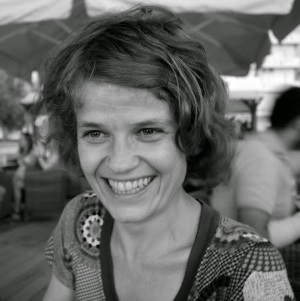
Dr Julie Seibt, University of Surrey, UK

Dr Julie Seibt, University of Surrey, UKJulie Seibt obtained her PhD in Developmental Neurobiology from the University Claude Bernard in Lyon, France. She started studying sleep and its influence on brain plasticity as a postdoc in the laboratory of Marcos Frank at the University of Pennsylvania. There, she developed a specific interest in the influence of sleep oscillations on synaptic and dendritic physiology. For her second postdoc, she went to Charité-Universtätsmedizin Berlin and used in vivo calcium imaging to monitor activity in cortical dendrites of sleeping rodents. She is now Lecturer in Sleep and Plasticity at the University of Surrey. Her main research interest is to understand the specific role of sleep stages in synaptic plasticity and memory, focusing on molecular and cellular changes in cortical dendrites and synapses. She takes a multidisciplinary approach, including electrophysiology, molecular, in vivo calcium imaging and behaviour in the rodent model. |
|
|---|---|---|
| 14:20 - 14:40 |
Role of the thalamus in memory consolidation
Hippocampal replay is essential for long-term consolidation of declarative memories. Hippocampal neurons are believed to spontaneously replay previously experienced activity patterns, especially at times of sharp-wave ripples (SWRs), a process supporting the consolidation of memories in the neocortex. However, the timing of SWRs during sleep is not random and, instead, is precisely coordinated by thalamocortical rhythms. This suggests that extrinsic inputs influence hippocampal activity, yet the mechanisms underlying dynamical coupling and information flow between these structures remain largely unclear. Here we will show that prior to SWRs, the anterior (“limbic”) thalamus shows a build-up of activity that is nucleus and cell-type dependent. Specifically, the anterodorsal nucleus, which conveys the head-direction (HD) signal to the navigation system, is maximally activated 50-100ms before SWRs while conveying a precise HD signal. In turn, it is known that SWRs are followed by thalamocortical spindle oscillations (10-15 Hz). During spindles, the HD signal fluctuates at high rate, in line with the view that during spindles thalamocortical circuits are disconnected from external inputs (including from the hippocampus), and that spindles may be associated more with cellular plasticity processes than with memory-related spiking patterns. In conclusion, the thalamus is certainly a key player in the orchestration of memory replay in the hippocampus and neocortex. 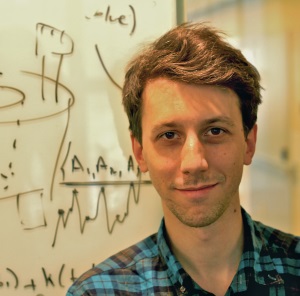
Dr Adrien Peyrache, McGill University, Canada

Dr Adrien Peyrache, McGill University, CanadaAfter graduating in physics, Adrien Peyrache studied cognitive science in a joint MSc program at UPMC and Ecole Normale Supérieure (Paris). Then he obtained a PhD at the Collège de France. His work focused on the neuronal substrate of sleep-dependent learning and memory. He did one year of postdoctoral training at the CNRS (France) where he studied the interplay between brain oscillations during sleep, crucial for memory consolidation. He then moved to the laboratory of György Buzsaki at New York University where he studied the neuronal circuits and dynamics that govern activity in the brain’s navigation system. In 2016, he started his lab at Montreal Neurological Institute, McGill University. His research aims at unravelling the neural processes that generate a neuronal code for space in the brain, both during wakefulness and sleep when memories of previous experiences are ‘replayed’. |
|
| 14:40 - 15:00 | Discussion |
| 15:00 - 16:00 |
Factors determining neuronal order during hippocampal sharp-wave ripples
Sharp-wave ripples are complex neurophysiological events recorded along the trisynaptic hippocampal circuit during slow-wave sleep and awake immobility. During these events, cognitively relevant sequences are triggered retrospectively or prospectively, and in the forward or reverse order as defined by experience. They could reflect either pre-configured sequences, learned sequences or an option space to inform subsequent decisions. How can different sequences emerge from directional connectivity is unknown. Emerging data now suggest the entorhinal-hippocampal circuit is organized in parallel loops along CA1 sublayers. It is discussed whether by incorporating cell-type specific physiological and computational mechanisms converging on deep and superficial CA1 sublayers could help to unveil the organization of sequences during sharp-wave ripples. 
Dr Liset M de la Prida, Instituto Cajal - CSIC, Spain

Dr Liset M de la Prida, Instituto Cajal - CSIC, SpainLiset M de la Prida runs the Laboratorio de Circuitos Neuronales at the Instituto Cajal in Madrid. She graduated in Physics in 1994 and earned her PhD in Neuroscience in 1998. She has held visiting positions in the laboratories of David Brown (London), Leon Lagnado (Cambridge) and Steven J Schiff (USA) that allowed her to acquire a broad background and expertise to study brain function. After a postdoc with Richard Miles in Paris she got her research position at the Instituto Cajal in 2007. The main goal of her lab is to understand the function of hippocampal and para-hippocampal circuits. Dr de la Prida serves as an Editor for prestigious journals including the Journal of Neuroscience, Journal of Neuroscience Methods and eNeuro, and has commissioning duties in the American Epilepsy Society and the Spanish Society of Neuroscience. She is a leading international expert in the study of the basic mechanisms of ripples and fast ripples. |
|---|
Chair

Professor Bruce L McNaughton, University of California at Irvine, USA

Professor Bruce L McNaughton, University of California at Irvine, USA
Bruce McNaughton’s research involves the physiological and computational basis of cognition, with particular focus on memory and memory disorders, and the dynamic interactions among neuronal populations and synaptic plasticity mechanisms that underlie these phenomena. Bruce has made significant contributions to understanding central synaptic plasticity mechanisms (eg, LTP cooperativity and behavioural correlates, synaptic facilitation, synaptic depression), spatial information processing in hippocampus and cortex, cortico-hippocampal interactions and memory consolidation, and brain ageing. Bruce’s work has been characterised by a strong interaction between neuroscience theory (including computational modelling) and experiment. His current main interest is the role of hippocampal outflow to neocortex in memory replay and memory consolidation and the extraction of knowledge from episodic memory.
| 08:00 - 08:30 |
Experience-dependent emergence of both theta- and ripple-based goal-directed sequences
During both active navigation and rest, temporally precise sequences of activity are produced across the hippocampal circuit. Recent findings suggest that pre-existing network dynamics strongly bias such sequences in all behavioral states. However, considerable evidence also demonstrates a critical role for experience in shaping the specific content of hippocampal sequences. For example, blocking synaptic plasticity during exploration of a novel environment virtually abolishes coherent re-expression of those behavioral sequences in subsequent rest. In addition, prior to goal-directed navigation, both ripple- and theta-based sequences display spatial trajectories which are heavily biased to proceed from the animal’s current location to a recently learned goal. Importantly, the encoding of the goal location in hippocampal sequences appears to emerge as a consequence of experience-dependent learning, with no goal-directed bias early in the behavioral task. While these findings do not rule out the possibility that preconfigured circuit connectivity can impact ‘offline’ sequences or influence how the hippocampus encodes experience, they highlight the importance of experience in further shaping the network to produce specific neuronal sequences that facilitate flexible behavior. 
Dr Brad Pfeiffer, UT Southwestern Medical Center, USA

Dr Brad Pfeiffer, UT Southwestern Medical Center, USABrad Pfeiffer performed his graduate studies under the mentorship of Kimberly M Huber, PhD, where he studied the synaptic mechanisms underlying Fragile X Syndrome. Dr Pfeiffer completed his post-doctoral training with Dr David J Foster, where he performed in vivo recordings and examined rodent hippocampal function and ‘replay’ during navigational tasks. Brad joined the faculty at UT Southwestern Medical Center in 2015, where he is an Assistant Professor in the Department of Neuroscience and an Endowed Scholar in Biomedical Research. |
|
|---|---|---|
| 08:30 - 09:00 |
Generative predictive codes within the hippocampus
Cortical neuronal ensembles form rapid internal representations about the external world through the interplay between internally-generated spontaneous neuronal dynamics and externally-driven activity about the specific sensory dynamics of the world. A stronger network reliance on the recruitment of internally-generated neuronal activity would greatly enhance the speed and efficiency of encoding at the cost of limiting its capacity to the combinatorial size of the fixed repertoire of internal neuronal motifs. On the other hand, a reduced dependency on an internal network model of the world would increase the flexibility and capacity for encoding independent representations that would instead require multiple exposures and additional time to create stable novel representations. Here, the authors reveal the existence of a generative predictive model for the statistical regularities of the contextual space in the hippocampus and define the principles underlying its use in navigation and its update by inferred intrinsic-unlikely neuronal functional connectivity and selective plasticity. These generative predictive codes rely on functional connectivity within and between high-repeat, short motifs of sequential neurons called ‘tuplets’. They propose that network organization into neuronal tuplets segments the extended temporal sequences into shorter modules, analogous to segmentation of words into syllables. This novel neuronal organizational principle could vastly expand the generative capacity of the network by rapidly combining neuronal tuplets into multiple independent extended temporal sequences. This would enable the hippocampal network to achieve high-speed and high-capacity encoding at the same time, as required by the cognitive functions it supports. 
Dr George Dragoi, Yale University, USA

Dr George Dragoi, Yale University, USADr George Dragoi is Assistant Professor in the Department of Psychiatry at Yale University School of Medicine in New Haven, CT. He holds an MD from the Gr T Popa University of Medicine and Pharmacy of Iasi, Romania, and a PhD in Behavioral and Neural Science from Rutgers University where he worked in the laboratory of Dr Gyorgy Buzsaki. He completed his postdoctoral studies at the Picower Institute for Learning and Memory at the Massachusetts Institute of Technology in the laboratory of Dr Susumu Tonegawa. Dr Dragoi studies the neurophysiological basis of the organisation of hippocampal neurons into cellular assemblies and their dynamic grouping during novel spatial exploration and in response to long-term synaptic plasticity. Recently, he revealed the existence of preconfigured cellular assemblies that pre-play in time the spatial sequences occurring during a future novel spatial experience. |
|
| 09:00 - 09:30 |
Sharp wave ripples during memory-guided visual search in macaques
Experience-related sequences of spiking activity in the hippocampus can be segregated into two groups. The first are those occurring during theta oscillations, which appear during locomotion and active exploration as well as in REM sleep. The second are those occurring during sharp-wave ripples, during pauses in exploratory activity and during slow-wave sleep. Whereas these groups provide consistent and meaningful divisions in brain-behaviour coupling in rats and mice, in anthropoid species like macaques and humans, the distinctions are less clear. We will describe our observations of sharp-wave ripples during active visual search in macaques, as well as in offline periods including sleep. The appearance of sharp-wave ripples in place of and superimposed within theta epochs suggests a possible expanded role for ripple-driven relative to theta-driven sequences during recall and decision making in primates. 
Dr Kari Hoffman, Vanderbilt University, USA

Dr Kari Hoffman, Vanderbilt University, USADr Kari Hoffman was recently appointed as an Associate Professor at Vanderbilt University, after spending 10 years leading a research group in the Psychology Department at York University. Her laboratory is focused on discovering the dynamics and mechanisms of plasticity in neural ensembles during perception and memory formation in primates. Dr Hoffman received her PhD in Neuroscience in the lab of Dr Carol Barnes and Professor Bruce McNaughton at the University of Arizona, with a project that pioneered multi-electrode array (MEA) technology using high-density recordings of neural populations, before moving to Germany for a post-doctoral fellowship with Dr Nikos Logothetis at the Max Planck Institute in Tuebingen. Dr Hoffman is a National Academy of Sciences Kavli Fellow and received new investigator awards from the Ontario Ministry of Research and Innovation, the Alzheimer’s Association, and the Alfred P Sloan Foundation. She has just finished leading a Brain Canada Multi-Investigator Research Initiative to modify neural dynamics in memory-related brain structures. |
|
| 10:30 - 11:00 | Discussion | |
| 11:00 - 11:30 | Coffee |
Chair

Professor Bruce L McNaughton, University of California at Irvine, USA

Professor Bruce L McNaughton, University of California at Irvine, USA
Bruce McNaughton’s research involves the physiological and computational basis of cognition, with particular focus on memory and memory disorders, and the dynamic interactions among neuronal populations and synaptic plasticity mechanisms that underlie these phenomena. Bruce has made significant contributions to understanding central synaptic plasticity mechanisms (eg, LTP cooperativity and behavioural correlates, synaptic facilitation, synaptic depression), spatial information processing in hippocampus and cortex, cortico-hippocampal interactions and memory consolidation, and brain ageing. Bruce’s work has been characterised by a strong interaction between neuroscience theory (including computational modelling) and experiment. His current main interest is the role of hippocampal outflow to neocortex in memory replay and memory consolidation and the extraction of knowledge from episodic memory.
| 10:30 - 10:50 |
Role of slow oscillations and spindles on reactivation of task-related ensembles during sleep
Sharp-wave ripples are complex neurophysiological events recorded along the trisynaptic hippocampal circuit during slow-wave sleep and awake immobility. During these events, cognitively relevant sequences are triggered retrospectively or prospectively, and in the forward or reverse order as defined by experience. They could reflect either pre-configured sequences, learned sequences or an option space to inform subsequent decisions. How can different sequences emerge from directional connectivity is unknown. Emerging data now suggest the entorhinal-hippocampal circuit is organized in parallel loops along CA1 sublayers. It is discussed whether by incorporating cell-type specific physiological and computational mechanisms converging on deep and superficial CA1 sublayers could help to unveil the organization of sequences during sharp-wave ripples. 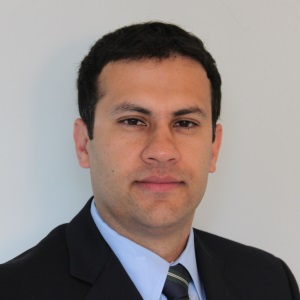
Dr Karunesh Ganguly, University of California, San Francisco, USA

Dr Karunesh Ganguly, University of California, San Francisco, USAKarunesh Ganguly is a neurologist and a research scientist at the University of California, San Francisco. He graduated from Stanford University and then completed his MD/PhD degrees through the Medical Scientist Training Program at the University of California, San Diego. He is also the Director of the Laboratory of Plasticity and Neural Engineering. The laboratory’s research program focuses on understanding the role of sleep-dependent plasticity on consolidation after motor learning and recovery from injury. He was awarded the Presidential Early Career Award for Scientists and Engineers (PECASE Award) by President Obama in 2014 and was selected for the 2015 New Innovator Award by the NIH Office of the Director. |
|
|---|---|---|
| 10:50 - 11:10 |
Neural substrate mediating motor sequence learning and consolidation
For more than 20 years, research in my laboratory has focused on investigating the behavioural determinants, neuronal substrates and neurophysiological correlates of motor skill learning and consolidation. During this presentation, I will review some of our work focusing on motor sequence learning (MSL) and will discuss our studies showing that the consolidation of this form of memory trace depends upon greater functional integration of the cortico-striatal system and non-rapid eye movement (N-REM) sleep spindle activity measured during the night following the initial training session. More specifically, I will describe the results of our simultaneous fMRI/EEG recording experiment, which show that: a) the cortico-striatal network recruited during MSL is reactivated during sleep, time-locked to spindles, b) such a reactivation of the memory trace is followed by reorganization of the neural representation toward a subcortically-dominant consolidated trace during the post-training night, and c) sleep spindles promote skill consolidation by locally reactivating and functionally binding task-relevant cortical and subcortical regions including the striatum.
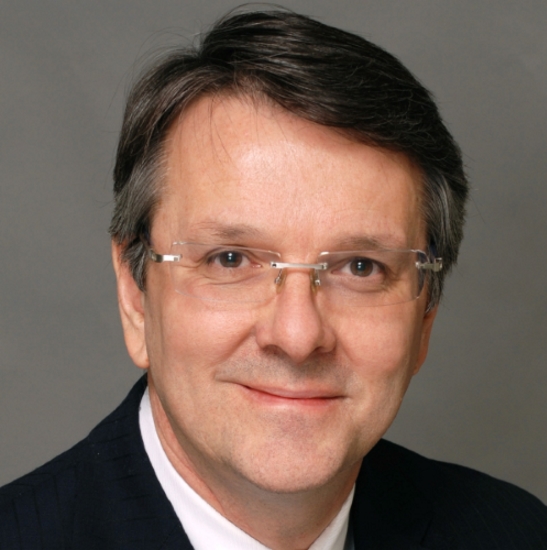
Dr Julien Doyon, McGill University, Canada

Dr Julien Doyon, McGill University, CanadaAfter completing his PhD in 1988 at the Montreal Neurological Institute (MNI) under the supervision of Dr Brenda Milner, Dr Doyon was an assistant professor in the Department of Psychology at Laval University until 2000. He then moved to University of Montreal where he became the founding Scientific Director of the Functional Neuroimaging Unit until October 2017. Currently, Dr Doyon is Director of the McConnell Brain Imaging Center at the MNI, professor in the Department of Neurology and Neurosurgery at McGill University and the founding Director of the Quebec Bio-Imaging Network (QBIN). Research in his laboratory investigates, through a combination of imaging techniques and modalities, the brain and spinal cord plasticity associated with motor learning, as well as the role of sleep in the consolidation and reconsolidation of this form of memory. More recently, Dr Doyon has also developed a clinical research program intended to identify functional and structural biomarkers useful for the early diagnosis of Parkinson’s disease. Finally, for his scientific contribution, Dr Doyon obtained the 2011 Canadian Society for Brain Behavior & Cognitive Sciences (CSBBCS) – Richard C Tess Award and was named Fellow of this Canadian society in 2017, in recognition of his outstanding contribution to the advancement of knowledge and leadership in the field of cognitive neuroscience and neuroimaging. He was awarded the 2012 ACFAS - Léo Pariseau prize highlighting the excellence and international impact of his work and was elected Fellow of the Royal Society of Canada in September 2017 as well as a member of the Canadian Academy of Health Science in 2018. |
|
| 11:10 - 11:30 | Discussion |
Chair

Dr Liset M de la Prida, Instituto Cajal - CSIC, Spain

Dr Liset M de la Prida, Instituto Cajal - CSIC, Spain
Liset M de la Prida runs the Laboratorio de Circuitos Neuronales at the Instituto Cajal in Madrid. She graduated in Physics in 1994 and earned her PhD in Neuroscience in 1998. She has held visiting positions in the laboratories of David Brown (London), Leon Lagnado (Cambridge) and Steven J Schiff (USA) that allowed her to acquire a broad background and expertise to study brain function. After a postdoc with Richard Miles in Paris she got her research position at the Instituto Cajal in 2007. The main goal of her lab is to understand the function of hippocampal and para-hippocampal circuits. Dr de la Prida serves as an Editor for prestigious journals including the Journal of Neuroscience, Journal of Neuroscience Methods and eNeuro, and has commissioning duties in the American Epilepsy Society and the Spanish Society of Neuroscience. She is a leading international expert in the study of the basic mechanisms of ripples and fast ripples.
| 12:30 - 12:50 |
Sleep modifies synapses during development
Synapses are the structures in the brain that form and store memories through the processes of synaptic plasticity. Sleep is an essential process that supports learning and memory by acting on synapses through poorly understood molecular mechanisms. Moreover, sleep disruption is commonly associated with neurodevelopmental and neurodegenerative diseases, and likely contributes to cognitive impairment in these conditions. Using biochemistry, proteomics and imaging in mice we show that during sleep, synapses undergo widespread alterations in composition and signaling. Consistent with the sleep homeostasis hypothesis which posits that part of the restorative benefits of sleep is mediated by broad weakening of synaptic connections we observe that sleep is associated with removal and dephosphorylation of synaptic AMPA-type glutamate receptors. These changes are driven by the immediate early gene Homer1a, and signaling from group I metabotropic glutamate receptors mGluR1/5. The changes that occur at synapses during sleep and the molecular requirement for Homer1a are highly reminiscent of homeostatic scaling-down in cultured neurons, further supporting the sleep homeostasis hypothesis. Our ongoing studies attempt to further dissect the molecular mechanisms that act on synapses during sleep, with a focus on synaptic signaling molecules related to mGluR1/5. We are applying this work to understanding how sleep disruption may contribute to cognitive impairments in autism spectrum disorder, and Alzheimer’s disease. Therapeutic strategies designed to enhance the restorative benefits of sleep will be discussed. 
Dr Graham Hugh Diering, University of North Carolina at Chapel Hill, USA

Dr Graham Hugh Diering, University of North Carolina at Chapel Hill, USADr Diering received his bachelor and doctorate degrees from the University of British Columbia, Canada, in biochemistry and molecular biology. He then worked as a post-doctoral fellow with Dr Richard Huganir in the Department of Neuroscience at Johns Hopkins University. During his post-doc Dr Diering worked to understand the molecular mechanisms of a type of synaptic plasticity called homeostatic scaling, and then went on to show that homeostatic scaling-down is engaged in the brain during sleep. Currently, Dr Diering is an assistant professor in the Department of Cell Biology and Physiology and the Neuroscience Center at the University of North Carolina. The Diering lab is focused on understanding how sleep supports the development of the brain and how sleep disruptions contribute to cognitive and behavioral problems in neurodevelopmental disorders. |
|
|---|---|---|
| 12:50 - 13:10 |
Sleep and synaptic down-selection
The synaptic homeostasis hypothesis (SHY) proposes that sleep is an essential process needed by the brain to maintain the total amount of synaptic strength under control. SHY predicts that by the end of a waking day the synaptic connections of many neural circuits undergo a net increase in synaptic strength due to ongoing learning, which is mainly mediated by synaptic potentiation. Stronger synapses require more energy and supplies and are prone to saturation, creating the need for synaptic renormalization. Such renormalization should mainly occur during sleep when the brain is disconnected from the environment and neural circuits can be broadly reactivated off-line to undergo a systematic and yet specific synaptic down-selection. In short, according to SHY, sleep is the price to pay for waking plasticity to avoid runaway potentiation, decreased signal-to-noise ratio, and impaired learning due to saturation. The talk will cover the rationale underlying this hypothesis and summarize electrophysiological, molecular and ultrastructural studies in flies, rodents and humans that confirmed SHY’s main predictions, including the recent observation, obtained using serial block face scanning electron microscopy, that most synapses in mouse primary motor and sensory cortices grow after wake and shrink after sleep. Unpublished ultrastructural data obtained in the CA1 region of the hippocampus and in the cortex of mouse pups will also be presented.
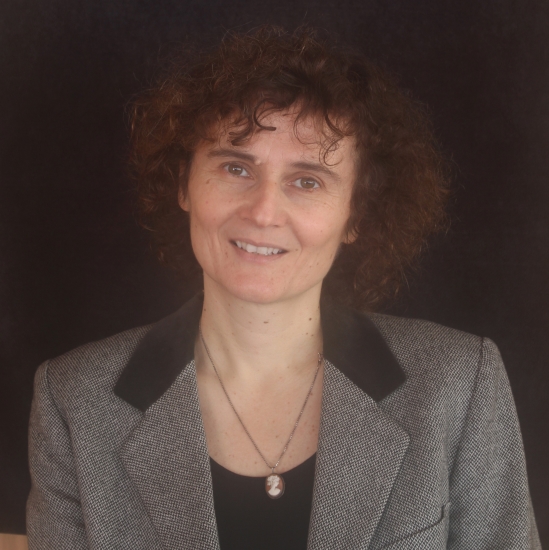
Dr Chiara Cirelli, University of Wisconsin, USA

Dr Chiara Cirelli, University of Wisconsin, USAChiara Cirelli received her medical degree and PhD in Neuroscience from the University of Pisa, Italy, where she investigated the role of the noradrenergic system in sleep regulation. She continued this work as Fellow in experimental neuroscience at the Neuroscience Institute in San Diego, California, and since 2001 at the University of Wisconsin – Madison, where she is currently Professor at the Department of Psychiatry. Her laboratory aims at understanding the function of sleep and clarifying the functional consequences of sleep loss. Her team identified neuronal and glial genes whose expression changes due to sleep and sleep loss, suggesting specific cellular processes that are favored by sleep and impaired by sleep deprivation. Using large-scale mutagenesis screening in Drosophila, they also identified the first extreme short sleeper mutant. With Dr Giulio Tononi, Dr Cirelli has developed the synaptic homeostasis hypothesis, according to which sleep is needed for synaptic renormalization, to counterbalance the net increase of synaptic strength due to wake plasticity. Over the years Dr Cirelli has been testing this hypothesis with an array of methodologies, including serial block face electron microscopy. She recently used this technique to show how cortical synapses grow during waking and shrink during sleep. Dr Cirelli has published over 130 papers on sleep and is Associate Editor of SLEEP. |
|
| 13:10 - 13:30 | Discussion | |
| 14:30 - 15:00 | Tea |
Chair

Dr James L McClelland, Stanford University, USA

Dr James L McClelland, Stanford University, USA
James L (Jay) McClelland is the founding director and current Co-Director of the Center for Mind, Brain, Computation and Technology at Stanford University. Over the past 40 years he has developed and applied neural network models to address a wide range of aspects of human cognition and their neural basis. He is co-author of the two-volume work Parallel Distributed Processing with David R Rumelhart. In collaboration with Bruce McNaughton and others, James developed the complementary learning systems framework for understanding the neural basis of learning and memory. McClelland is a Member of the National Academy of Sciences (USA) and is a Corresponding Fellow of the British Academy, and has received many honours and awards, including Heineken Prize in Cognitive Science.
| 14:00 - 14:20 |
Homeostasis in spike rates during wake and sleep – possible role for spike sequences
Sleep states are thought to have a strong homeostatic role in neocortical circuits. Previous work has shown that neocortical firing rates are modulated over sleep-wake cycles in a manner consistent with homeostasis: firing rates on average rise during waking periods and drop during sleep periods. In this work, prefrontal cortical neuronal populations in rats were recorded with silicon probe arrays to obtain large numbers of recorded neurons simultaneously to allow us to examine network-wide effects of natural sleep and wake cycles. Results from these high-channel count recordings revealed that neurons of differing overall firing rates are regulated differentially during sleep sessions with only the highest-firing rate cells showing consistent drops in firing rate with sleep, while low firing-rate neurons either did not show a net change in activity or even showed increased firing rates by some metrics. The overall variance of the network activity dropped over sleep as a result of this differential effect, pointing to a prominent homogenization effect of sleep and homeostasis. In addition these recordings revealed that high firing rate neurons tended to fire earlier than low firing rate neurons during repetitive (1 hertz) network UP state activations. This latter finding leads to the hypothesis that spike timing dependent plasticity (STDP) rules may combine with repeated sequences of high-rate then low-rate cells to create the differential effect on total drive to high versus low firing rate cells. We therefore suggest that sequences of network activity during sleep may serve not just a mnemonic function by may drive network homeostasis. 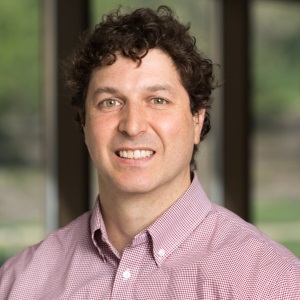
Dr Brendon Watson, University of Michigan, USA

Dr Brendon Watson, University of Michigan, USABrendon Watson specialises in neuroscience and psychiatry with an emphasis on the use of high throughput tools and tool development for neurobiologic studies. During his PhD he used two-photon microscopy to study the behaviour of neurons in local cortical microcircuits. He pursued a residency in psychiatry at Weill Cornell Medical College as well postdoctoral work at New York University where used high channel-count silicon probe electrodes to report novel properties of the prefrontal cortex. He received the National Institute for Mental Health’s Outstanding Resident Award, the American Psychiatric Association’s Lilly Research Fellowship and the Leon Levy Neuroscience Fellowship. He is now combining new approaches to electrical recordings with optogenetic and behavioural tools to deepen our understanding of brain circuits over varying brain states. |
|
|---|---|---|
| 14:20 - 14:40 |
Experience and sleep-dependent synapse remodelling
Experience-dependent synaptic plasticity is critical for encoding and storing information. How experience-induced synaptic plasticity is distributed and maintained in neuronal networks remains unclear. Dendritic spines are the postsynaptic sites of most excitatory synapses in the mammalian brain. Using in vivo two-photon microscopy, we examined the effects of motor learning and chronic pain on dendritic spine remodeling in the mouse cortex. We show that new spines are formed on different sets of dendritic branches of layer 5 pyramidal neurons in the motor cortex in response to different motor learning tasks. This branch-specific formation of dendritic spines facilitates the maintenance of new spines when multiple tasks are learned. In addition, chronic pain induces dendritic spine formation and elimination on a subset of dendritic branches of layer 5 pyramidal neurons in the primary somatosensory cortex. Notably, cortical neurons that are active during motor training or responsive to nociceptive stimuli exhibit a substantial increase in calcium activity during subsequent non-rapid eye movement sleep. Blockade of neuronal activity during sleep reduces experience-dependent dendritic spine plasticity and alleviates chronic pain. Together, these findings suggest that experience and subsequent sleep lead to dendritic branch-specific synaptic remodeling, thereby contributing to memory storage in neuronal circuits. 
Dr Guang Yang, Columbia University, USA

Dr Guang Yang, Columbia University, USADr Guang Yang is an Associate Professor in the Department of Anesthesiology at Columbia University, New York, USA. Her research focuses on understanding how sleep, anesthetics and immune cells affect changes of neural circuits underlying sensory processing and memory formation. Using in vivo two-photon microscopy to monitor fluorescently-labelled neurons in the living mouse cortex, her recent studies indicate that sleep has multifaceted functions in learning and memory consolidation: non-rapid eye movement sleep promotes new synapse formation after motor learning by reactivating task-related neurons, while rapid eye movement sleep selectively eliminates and maintains newly formed synapses via dendritic calcium spike-dependent mechanisms. |
|
| 15:00 - 16:00 | Summary | |
| 15:40 - 16:00 | Discussion |


